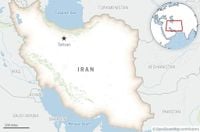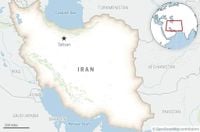On Wednesday, August 27, 2025, Iran’s security forces launched a series of coordinated operations in the country’s southeast, resulting in the deaths of 13 militants. According to reports from state television and The Associated Press, these operations unfolded in three separate cities within the province of Sistan and Baluchistan—a region long marked by unrest, poverty, and violence along Iran’s borders with Afghanistan and Pakistan.
Of the 13 militants killed, eight were identified as members of a group responsible for a deadly attack just five days earlier. That attack, which took place on Friday, August 22, 2025, left five Iranian policemen dead while they were on patrol in the same province. Iranian media outlets, including state TV, have pointed the finger at Jaish al-Adl, a militant group that claims to be fighting for the rights of the ethnic Baluch minority in the region. The group has a history of targeting Iranian security forces and has been blamed for several high-profile attacks in recent years.
The operations on Wednesday were not limited to lethal force. Authorities confirmed that additional militants were detained during the raids, though they declined to specify how many individuals had been taken into custody. Both the local police and Iran’s powerful paramilitary Revolutionary Guard were deeply involved in the execution of these operations, reflecting the seriousness with which the government views the ongoing instability in Sistan and Baluchistan.
What prompted such a swift and forceful response? The killing of five policemen the previous Friday was a flashpoint, highlighting the persistent threat posed by militant groups in the province. According to Iranian state media, the group responsible for the attack was tracked down over the subsequent days, culminating in Wednesday’s deadly confrontations. Clashes erupted in three different cities, though officials have not released the exact locations or further details about the incidents.
Sistan and Baluchistan is no stranger to violence. The province, which shares long and porous borders with Afghanistan and Pakistan, has for years been a battleground for a range of armed groups. These include not only militant organizations like Jaish al-Adl but also heavily armed drug smugglers who use the region’s remoteness and underdevelopment to their advantage. Iranian security forces have frequently found themselves in deadly skirmishes, trying to maintain order in what is widely considered one of the country’s most challenging regions.
It’s worth noting that Sistan and Baluchistan is one of Iran’s least developed provinces. Chronic poverty, lack of infrastructure, and limited economic opportunity have fueled grievances among the local population, many of whom belong to the Baluch ethnic minority. This group has long complained of discrimination and marginalization by the central government in Tehran. Jaish al-Adl, whose name means “Army of Justice,” claims to champion these grievances, though Iranian authorities have consistently labeled the group as terrorists.
The deadly events of late August are just the latest chapter in a long-running cycle of violence and retaliation. For years, Iranian security forces have struggled to stamp out militant activity in the southeast, often resorting to large-scale operations involving both police and the Revolutionary Guard. These efforts have sometimes succeeded in disrupting plots or capturing high-profile suspects, but the underlying tensions in the region remain stubbornly persistent.
According to The Associated Press, the government’s latest crackdown underscores the seriousness of the threat. Officials have not shied away from using force, and Wednesday’s operations were described as decisive and well-coordinated. However, the lack of transparency regarding the number of detainees and the precise circumstances of the clashes has left some observers with questions. Human rights groups have in the past criticized Iran’s handling of security operations in Sistan and Baluchistan, warning of the potential for abuses and the risk of fueling further resentment among the local population.
For the people of Sistan and Baluchistan, the violence is a grim reminder of the region’s precarious security situation. While the government’s efforts to combat militancy may bring a measure of short-term stability, the root causes of unrest—poverty, marginalization, and a lack of opportunity—remain unaddressed. The province’s location, straddling two of the world’s most volatile borders, only compounds the challenges faced by both residents and security forces alike.
Jaish al-Adl’s role in the recent violence is particularly significant. The group emerged in the early 2010s, following the decline of Jundallah, another militant organization that had previously operated in the region. Jaish al-Adl has claimed responsibility for numerous attacks on Iranian security forces, often citing the government’s treatment of the Baluch minority as justification. Tehran, for its part, accuses the group of being backed by foreign powers and of seeking to destabilize the country’s southeastern borderlands.
Wednesday’s operations, involving both police and the Revolutionary Guard, reflect a broader strategy by the Iranian government to bring the province under tighter control. The presence of the Revolutionary Guard—a force answerable directly to the country’s Supreme Leader—signals the high stakes involved. The Guard has a reputation for taking a hard line against perceived threats, and its involvement often points to the seriousness with which Tehran views the situation.
Despite the government’s claims of success, the reality on the ground remains complex. Sistan and Baluchistan’s geography—marked by rugged mountains and vast deserts—makes it difficult for security forces to maintain a constant presence. The region’s proximity to Afghanistan and Pakistan also means that armed groups can slip across borders with relative ease, complicating efforts to root out militancy once and for all.
In the aftermath of Wednesday’s operations, officials have promised to keep up the pressure on militant groups. Yet, as history has shown, security crackdowns alone are unlikely to resolve the deeper issues that fuel unrest in Sistan and Baluchistan. Without meaningful development and efforts to address the concerns of the Baluch minority, the cycle of violence may well continue.
The events of the past week have once again thrown a spotlight on one of Iran’s most troubled regions. As families mourn the loss of both policemen and militants, the people of Sistan and Baluchistan are left to navigate the uncertain terrain between security and justice, caught in the crossfire of forces far beyond their control.


